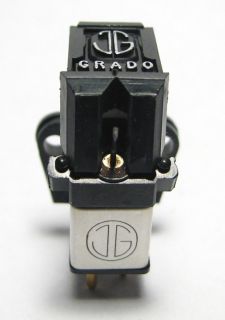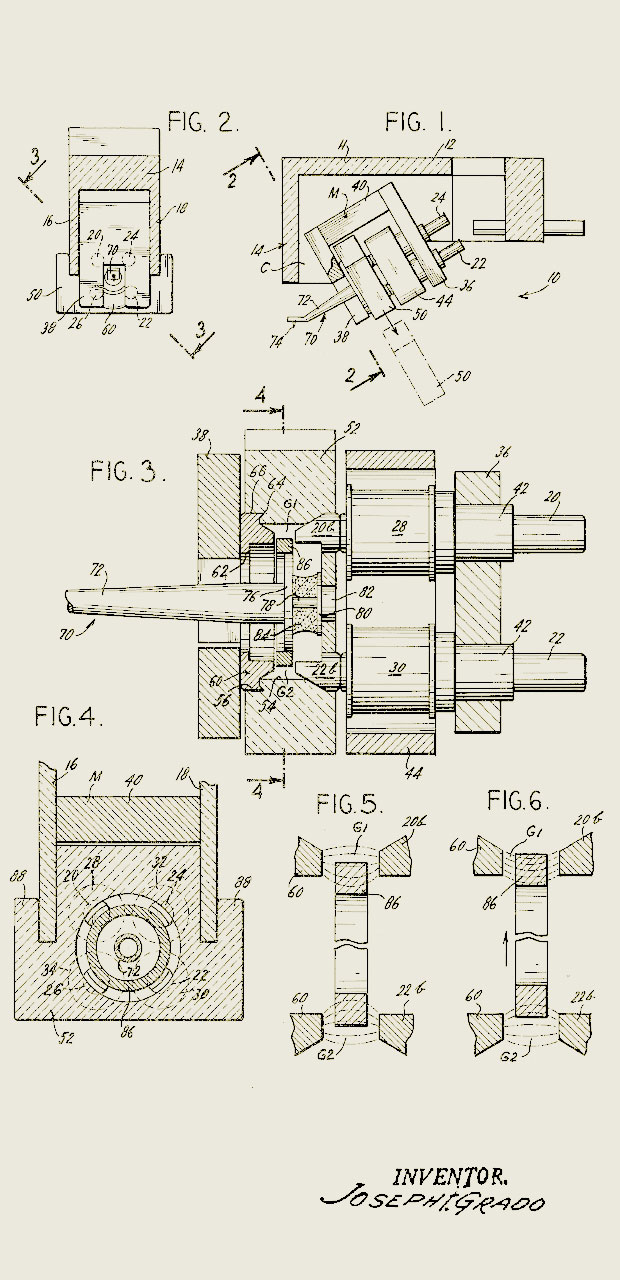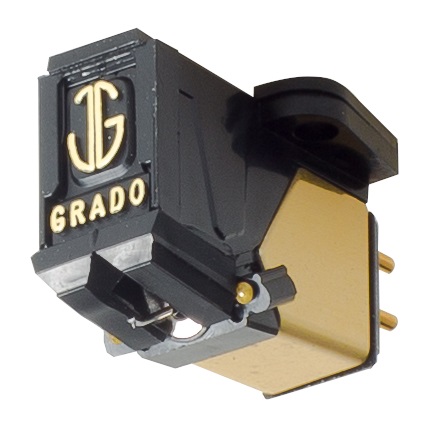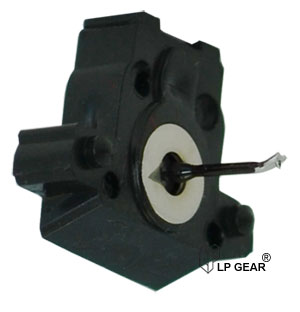I bought this Joe Grado Signature 8MX used in 2016 from the USA from the excellent Marc Morin, whom I met on the Audiokarma forum and who had given me many useful tips in the past. In 2014, always inspired by the advice of the same Forum, I bought a very good 8MZ stylus for the Grado Prestige Gold cartridge I was using then.

I have a nice Grado Signature 8MX cartridge from the 80s… it would sound very well with the new 8MZ replacement stylus…
I am very fond of the Grado brand for a number of reasons. In 2005, I thought that the Thorens TD 165 I owned at the time could deserve at least one better cartridge than the Goldring Elan it mounted. I asked Lucio Cadeddu, editor-in-chief of the online magazine TNT-Audio, for help with the upgrade and he advised me, among other things, to look in the Grado catalogue. The lower part of the catalogue is the Prestige series, which then contained the Black, Silver and Gold models. The Gold comes from the selection of the Silver production, which in turn comes from the selection of the Black. Higher up are the Reference and Statement series cartridges. I went to the Prestige series with the top cartridge: the Prestige Gold. Today we are at the Black 3 series — Gold 3, much improved in performance since then!

The three Grado generations: from the left, the founder Joseph, John Grado (son of a brother of Joe) and Jonathan, son of John.
The Grado family has been making headphones and turntable cartridges by hand in their Brooklyn workshops since 1953, when the company was founded by Joseph Grado (1925-2015), son of a Sicilian immigrant. A good opera singer, Joe (left in the picture above) also had an ear that became legendary. He soon left ordinary school to join the watchmaking school (a subject he also taught – he was one of only two master watchmakers in the USA at the time), contrary to the dreams of his father who saw him and his other children in the family business, a food chain in Brooklyn. Instead, Joe, a lover of high fidelity and stereophony, was introduced to the audio world by none other than the legendary Saul Marantz. Joe began making headphones in the family home, in the kitchen, and then transformed his father’s grocery store into what are now known around the world as Grado Labs.
Joe was the inventor of moving coil cartridges (MC), an alternative technology to the usual moving magnet (MM) technology that went on for a very long time. Years later he preferred to deviate from that idea by bringing the merits of the MCs into his moving magnet line. Grado cartridges today are all moving iron (MI), a derivation of moving magnet technology. The stylus use a transmission line configuration, a special vibrating mass configuration and the flux-bridger system, all designed by Grado himself. Typically, Grado cartridges maintain a low inductance factor despite the resistance and output voltage remaining unchanged.

The late Joseph Grado founded the Grado Laboratories working on his Italian parents’ kitchen table.
In 2005 I bought a Prestige Gold “0” (the first edition) and the music reproduction quality increased a lot! The Cambridge Audio CD-6 CD player I had then didn’t keep up. Both its respectable Oppo 980H successor, and the current Cambridge D500SE, were beaten by the old Thorens TD-160, which plays the Grado cart (indeed) well. What I didn’t know then was that the very Prestige Gold speciment they sold me at the time was actually equipped with a prestigious 8MZ stylus. I didn’t know anything about it then, so in 2010 I replaced the worn out stylus with the Gold1, getting sort of a middle ground between the old Gold and the more modern Gold1, at least as far as the stylus is concerned. Then I consciously upgraded it this time with an 8MZ stylus and got a considerable performance boost, which I certainly didn’t appreciate the first time as I knew nothing about cartridge alignment and floating chassis turntable setup. Later I decided to use the Signature 8MX body with the same stylus designed specifically for the 8M series, signed by the late Joe Grado. The series started I think in the early 1980s with the Signature 8, later evolving into the 8M. The next was designated the 8MR followed by my 8MX. The last in the series was the 8MZ, for which Grado still produces the replacement stylus, suitable for the whole series and also good for the Prestige. The only drawback is that originally the 8MZ stylus had a nude diamond while today it is instead bonded, which is a more hasty method and with inferior sonic results. Yet the price has gone up quite a bit (while still being a valid, if not excellent, replacement for any Grado Signature of the past or a worth upgrade for any Prestige cart of today).
Today the Grado Laboratories are run by Joe’s nephew, John (son of a brother), and continue to hand-assemble cartridges and headphones. Since the days when Uncle Joe started having difficulties with the drop in vinyl sales while the CD was raging, Grado’s nephew John has been doing just fine. The great thing is that John is not interested in growing out of proportion, becoming a multinational company and earning as much money as he could and live as a rich man. No, he knows he’s earning as well as he could to live in peace. So he has time for what’s important, to be with his family. It may be his Italian origins, but I’m very sympathetic to that…

For years I ran the first issue of the Grado Prestige Gold on my Thorens turntable
The Grado Prestige Gold has served about 10 years on my two Thorens; at one time it occurred to me that maybe I could look for a higher performance cartridge. I’ve been fond of the Grado brand ever since I got a wonderful SR-200 Prestige headphone. Even the Grado Gold has never let me down. I could have been looking for something higher in the Grado range. But their higher level cartridges do not have the interchangeable stylus. The interesting thing is that any cartridge body from the Prestige series can use a replacement usually dedicated to high end performance (and price) cartridges that are no longer in production today. The Signature 8MZ stylus I am using (below) is sold today for $150 plus shipping. Word on the enthusiast forums is that this stylus can take a Prestige cartridge to levels that are close to Reference. I tried: I sold the Shure V15 III cartridge and its replacement stylus and had an 8MZ stylus shipped to me from the USA (I still didn’t know I had used one from the beginning). The typical Grado sound, soft but involving remained so, but perhaps even more refined?
This enticed me to try the Grado Signature 8MX from the 80’s offered to me at a good price in 2016. It seems that the difference with the current Prestige series is simply a more layered presentation in the Signature and a more listener-oriented presentation in the Prestige. As I mounted it on the Thorens shell, the precious 8MZ stylus slipped out of my hands and fell to the ground bending the cantilever over! I was in no condition to buy another one. In my discouragement I wrote to Grado Labs that actually, as would also seem obvious, recommended me to use their Gold1, stating that they could neither predict nor endorse the use of different styli, not designed for that cartridge body. Marc Morin was kind enough to ask me to send him the stylus to see what he could do. Meanwhile I used both the Signature 8MX body from the 80’s and my old Prestige Gold with the Gold1 stylus that I had been using for 5 years. Miraculously, the generous Marc from Ohio managed to straighten the stylus, which tested on appropriate records showed to maintain performance, except for a noticeable drop in output level; I have to say that when the 8MZ stylus came home I didn’t notice a big difference but the level is low. Since some damage to the Gold1 stylus also occurred at the end of 2018 in the exact same mode (sigh!), I was forced to use the 8MX/8MZ pair and I have nothing to regret but the fact that I also damaged that stylus.

The 8MZ replacement stylus still made by Grado for the old Signature bodies is also a great improvement to the current Prestige 3 series bodies
I had sent what was left of the two Grado 8MZ styli to the USA to a technician who couldn’t do anything about it because of the damaged suspensions. So I will have to decide whether to keep the 8MX and equip it with an expensive 8MZ stylus or go for the new Grado Prestige 3 series. I tried a Prestige Blue 3. But compared to the Shure M97HE you can hear the lack of detail in the treble and a bit of a bloated low end. Maybe it is the Grado sound, which I am no longer used to after a few years with the linear response of the Shure. I tried to break in the Blue 3 a bit but eventually I reluctantly sold it. The fact remains that probably my memory of good sound from the Grado was related to the 8MZ stylus. Today it is a bit expensive but I should make up my mind sooner or later since the 8MX deserves it, the current 8MZ is damaged and its sound has little substance. Some say that a Grado Signature with 8MZ is not much different in performance from a very good Shure M97HE.
Shure no longer produces phono cartridges, and although it is difficult for a cartridge body to break and the availability of aftermaket styli will always be there, it would not hurt to consider alternatives in production such as the Adiotechnica AT-VM series (considering the high 8MZ price and its difficult availability outside the USA). But I would like to continue to use a Grado cartridge anyway, as I really like the very human approach of the Italian-American Grado family.
Interview to John Grado on head-fi.org